Amphora the container of choice for 4000 years from the Sumerians to the Romans. The ubiquitous amphora carried perishable goods from Andalucia to civilisations in the eastern Mediterranean and throughout the Roman Empire
By Nick Nutter | Updated 5 Mar 2022 | Andalucia | History |
Login to add to YOUR Favourites or Read Later
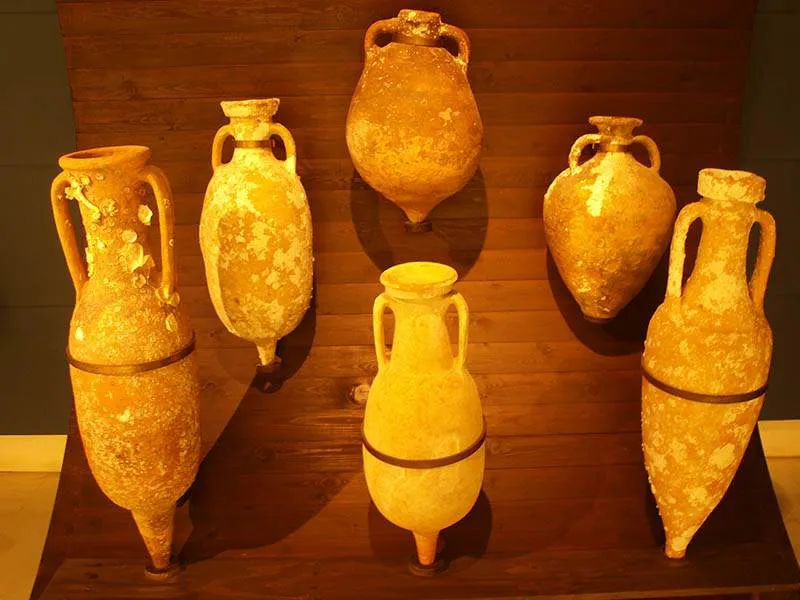
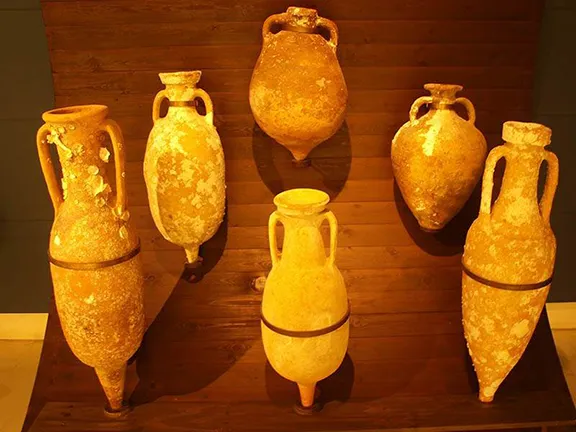
Amphorae at Cadiz museum
You will have seen them in museums, you will have seen them used as decorative pieces, you may even have seen them, labelled to guarantee their authenticity, for sale in garden centres. They are amphorae (plural) or amphora (singular) and they are an important part of the ancient historical jigsaw because they can be identified by age, their original contents, origin and, since they were ‘one time use’ vessels and broken up once empty, in many cases the destination can also be determined.
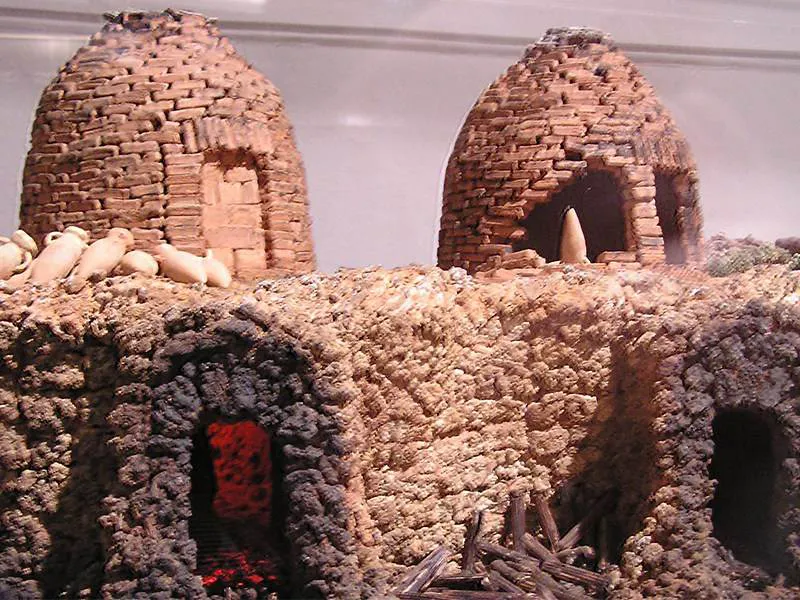
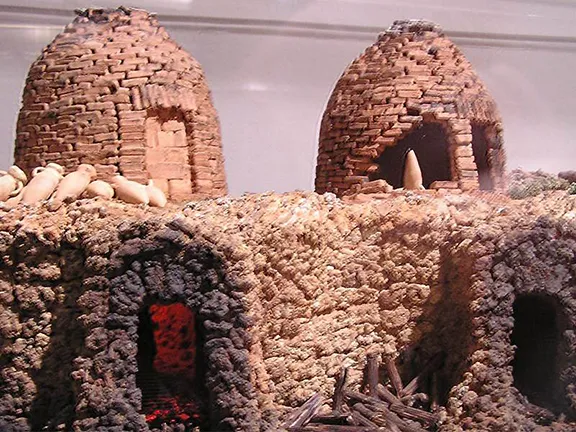
Model of Roman kilns at Cadiz
Amphorae were as common once as plastic bottles are today. They were manufactured in their millions and it made sense to use local clays and labour in the vicinity of the product to be stored or transported.
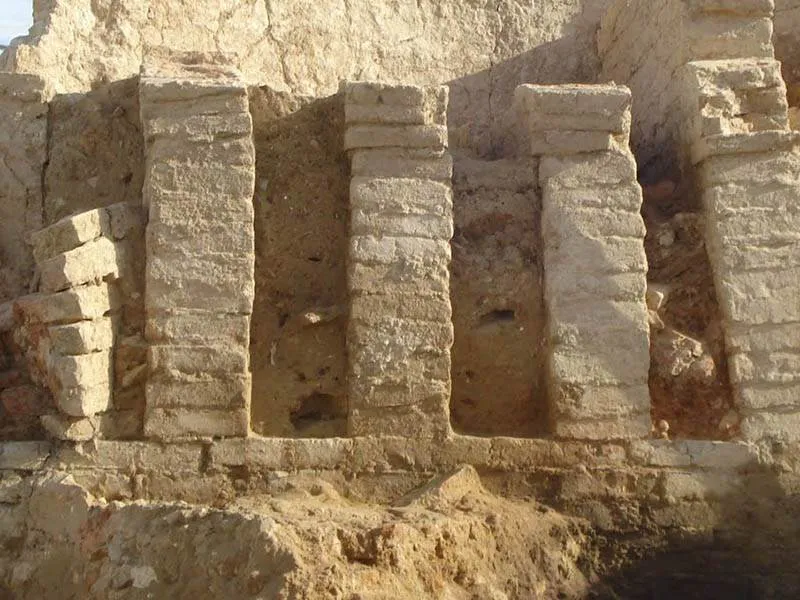
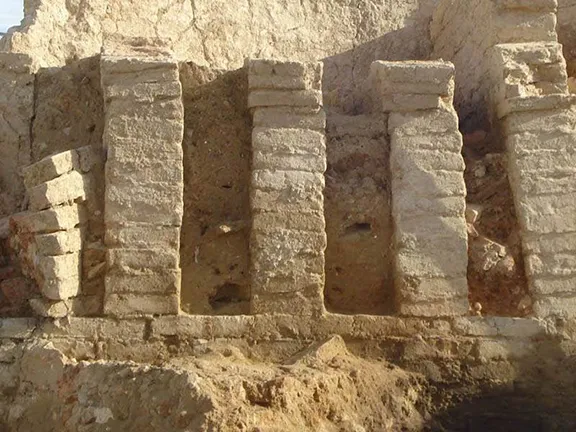
Remains of kiln at Mailva
In 2011 a 2nd century AD Roman kiln was unearthed at Manilva. It may well have been used to make amphorae for products shipped out of the Roman port on the coast below at what is now Castillo de la Duquesa as well as tiles, bricks and crockery for the nearby settlements and villas.


Dressel patterns
In Rome, an area called Testaccio was set aside for the destruction of amphorae. Here the shards were mixed with mortar and used to create a hill now called Monte Testaccio 1 kilometre in diameter and 45 metres high. In other parts of the Roman Empire, including Baelo Claudia and Carteia (Andalucia), the shards and mortar mix were used to make a decorative and non-slip aggregate.
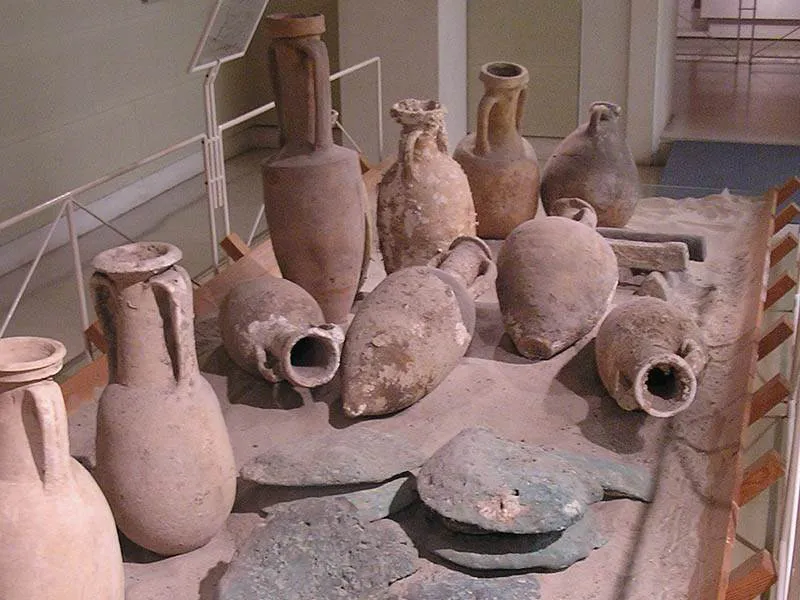
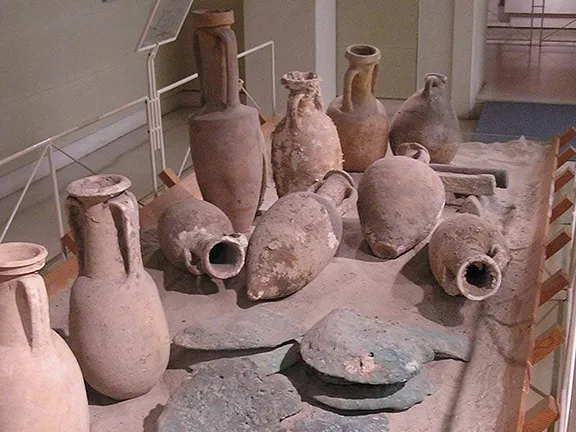
Collection of amphorae
Amphorae were used in the Mediterranean theatre for over four thousand years and in that time hundreds of patterns of amphorae have been identified. It is this pattern that allows the modern archaeologist to determine the origin and age of the find. A 19th-century academic called Dressel accurately recorded the shapes of forty-five types of amphorae used from 129 BC to the 3rd century AD and his table is still used for reference today. Amphora 12, fourth from the left is a Betic amphora used to transport salted fish from Andalucia. The remainder are all patterns used by Roman amphorae manufacturers in Spain.
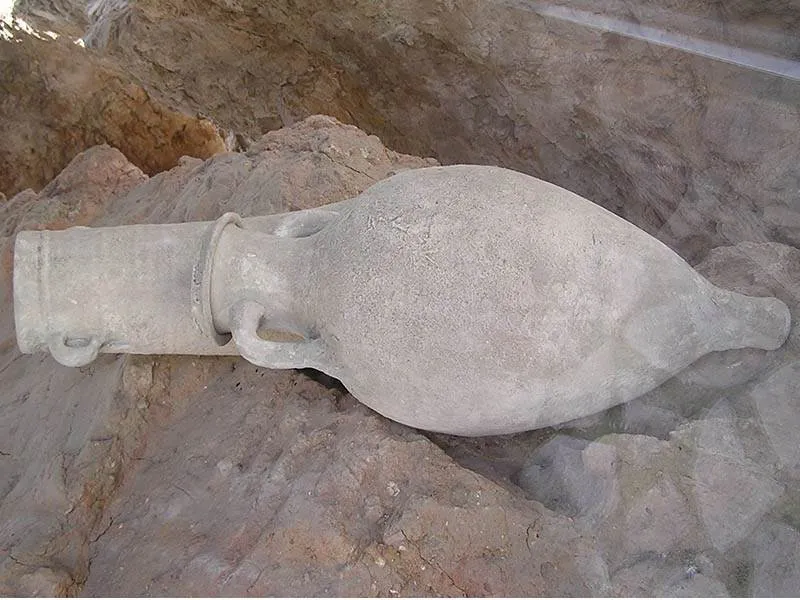
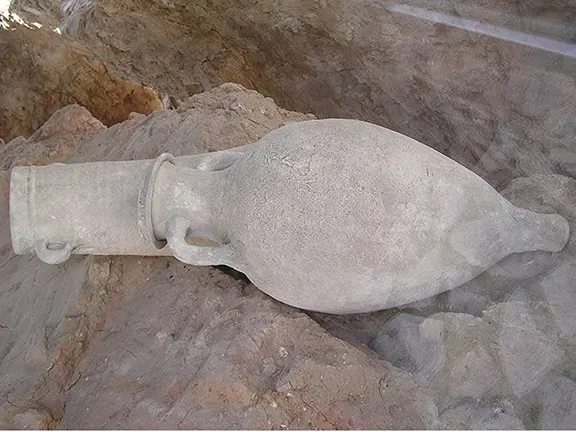
Amphora at San Fenrnando
The material itself and in certain cases the shape can also identify where the amphorae were manufactured. Amphorae from the Málaga region and from the Camposoto and Torre Alta areas in San Fernando were particularly favoured for the quality of the clay used in their manufacture.
The earliest amphorae have a slim neck and an angled join where the neck meets the body of the container, think of a Greek-style vase. Later models are much more rounded and the latest models are a very smooth curved shape from top to bottom. Although they appear extremely unstable with a narrow or non-existent foot and a high and relatively narrow body, up to 1.5 metres tall, they were in fact very cleverly designed to allow them to be stood upright in the sand used to ballast the cargo vessels of the time. A rope would be wound through all the handles to prevent them from moving against each other.
In their manufacture their elongated shape was also an advantage. The wheel on which the amphora was turned had a hole in the centre so that, if the clay was centred on the hole and fixed by a small protrusion through the hole, the container would always be symmetrical, a modern potter has to use his thumb to find the centre of the clay on the wheel. Once thrown the amphorae were dried on racks, again fitted with holes to take the protrusion and then fired in kilns that had holes in the oven floor. These performed two functions, they allowed the amphorae to stand upright and simultaneously allowed the heat from the fire below to percolate through into the oven.
First appearing in the Eastern Mediterranean about 3500 BC amphorae were the container of choice for the trading nations of the Sumerians and the Phoenicians. The latter spread their use to the western Mediterranean whilst the ancient Greeks also found them useful and they started to be found in Turkey and on the shores of the Black Sea. The Romans later saw no reason to change the design and used them throughout their Empire. The Romans, being Romans, even went as far as producing a standard volume amphora that held about 39 litres of liquid. Interestingly the volume also equals one cubic foot. This gave rise to the amphora quadrantal, a standard measure of volume used throughout the Empire. The standard vessel against which others were measured was the amphora capitolina that was kept in the Temple of Jupiter on Capitoline Hill in Rome.
Since they were used for the commercial transportation of various goods, olive oil, wine, garum, salted fish, grapes, grain and a miscellany of other perishables, they provide a record of the overseas trading activities of the ancient world from around 2500 BC until their use declined in the 7th century AD.
A 1999 study looking at the Romano-British Amphora Trade from 100 BC to 43 AD meticulously records the trade between the British Isles and the Roman Empire in Gaul, the Germanic tribes further east, and the Dacians, Scythian and Sarmatian tribes around the Black Sea. The study identifies not only the wide range of goods passing back and forth in a series of patterns of amphorae depending on their age and content it also sheds light on the complicated trade treaties known to exist between the various tribes and the political differences between those tribes.
Closer to home, in 2006 a 1st-century Roman wreck was excavated off the coast of Alicante. It proved to be a cargo vessel carrying 1,500 amphorae of garum along with lead and copper. Examination of the cargo and its containers allowed academics to determine the ship had sailed from Cádiz and was on its way back to Italy when it sank in a storm.
In 1998 Odyssey Marine Exploration discovered a Phoenician vessel in the Western Mediterranean. They nicknamed it Melkarth after the Phoenician god. The amphorae on board allowed the wreck to be dated to the mid 5th century BC. The material and shape of the amphorae showed they originated in the eastern Mediterranean.
Originally a humble single-use vessel as common then as beer bottles are today, amphorae have since proved to be an enduring and illustrative record of history from ancient times to Mediaeval.
Interestingly the amphora may be about to re-emerge as a favoured container for storing wine. Modern winemakers in Sicily (Gabrio Bini) are using amphora to age wine to provide different finishes to their products.